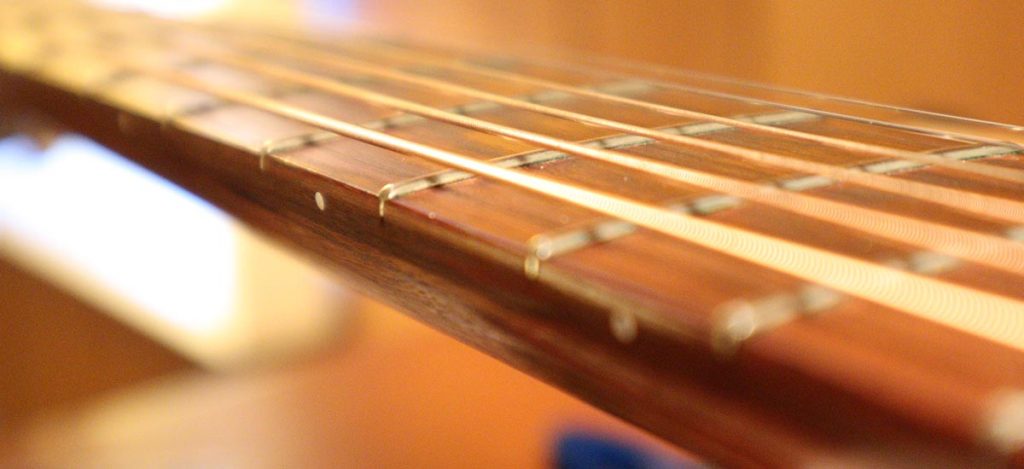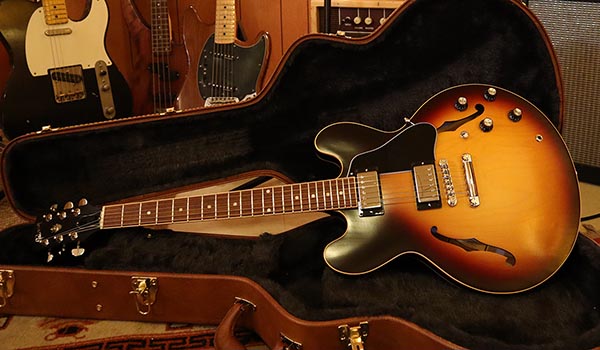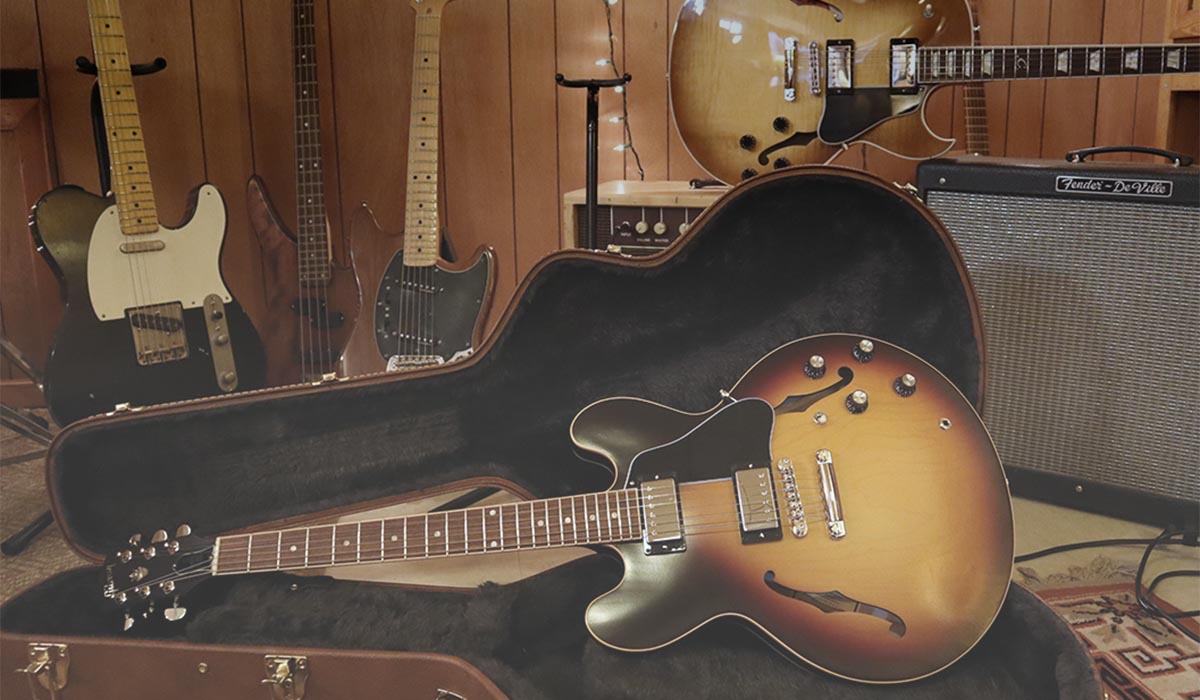We all know that humidifying an acoustic guitar is absolutely crucial to avoid cracks and wood separation, but what about an electric guitar? For most electric guitars humidification is not necessary, the exception being some semi-hollowbody guitars and archtops with solid wood tops.
Interested in humidity and your acoustic guitar? Read my article: All you need to know about humidity and guitars.
This is a controversial opinion, and many sources out there on the internet will tell you that it is absolutely necessary to humidify your electric guitar. In this article I’m going to make the case for why it’s not necessary, and can actually cause more problems than it’s worth.
Table of Contents
Why Do You Need to Humidify Your Electric Guitar?
The argument is that all guitars that are made out of wood are subject to the expansion and contraction caused by changing humidity. These changes can be detrimental to wood instruments causing cracks in the wood, finish, binding, and other plastic parts like pickguards and truss rod covers.
This is a sound argument and one that is important to consider. The wood used in building an electric guitar is just as susceptible to movement as the wood in an acoustic guitar, so they should be humidified the same right? Not necessarily.
The most common place where you see wood shrinkage in an electric guitar is in the fingerboard, pulling inward towards the middle of the fret leaving sharp fret ends jutting out into your unsuspecting hand. With higher quality instruments, care is taken to make sure a piece of wood has dried evenly and thoroughly before using it on a guitar. Guitar manufacturing plants are often kept at 45% – 55% humidity, which is the ideal humidity for guitars. However, when they are moved to drier environments some amount of wood shrinking is bound to occur.
Filing sharp fret ends is a common repair task, and is both easy to learn and fairly cheap if you’re taking your guitar to a repair tech. I consider this a necessary repair task in the same way cleaning guitar pots, or tightening loose jacks will inevitably be required.
Sharp frets are a fact of guitar life, and while preventative humidification may slow the process, the fretboard shrinking is inevitable in most dry climates.

Another reason that you may want to consider humidifying your electric guitar is the cracking of the finish as a guitar’s wood shrinks. While some finishes, like polyurethane, are thick and hard as nails, others are considerably lighter and don’t flex with the changing shape of the wood quite as well. If a guitar goes through extreme temperature or humidity changes there’s a good chance or running into finish checking or cracking.
Why You Don’t Need to Humidify Your Electric Guitar
I’ve hinted at it a little bit already, but most issues that are caused by low humidity are a matter of routine maintenance when it comes to an electric guitar. If you want to learn more about working on your own guitar, head over to my Guitar Tech page where I teach you how to perform all the guitar maintenance tasks you need to know.
For a solid body guitar we’re not worried much about the body wood itself shrinking. A large block of solid wood is not going to be moving much as long as humidity is dropped evenly over a period of time. I live in a dry climate and burn wood in my fireplace at home. This is the worst combination for guitars as it dries out already dry air, especially in the winter months.
I have never experienced any problems with solid body electrics and humidity, save for the already mentioned stray fret and that needs to get knocked down. As an example, after 12 years my Fender American Strat has settled in and I haven’t had to address any fret issues in over 6 years.
Overall I don’t think that humidifying an electric guitar is necessary. There may be some exceptions I’ll address below regarding semi-hollow and hollowbody guitars, but for most guitars it’s not going to make much of a difference.
Below are my 2 main reasons for not humidifying your guitar.
#1 Excess Humidity is Bad For Electrical Components – While providing water for the wood part of the guitar is good and difficult to overdo it, excess water in the air isn’t a great thing for electrical components.
Now, to play devil’s advocate, more humidity will decrease static electricity in your guitar which can cause scratchy pots and switches and also static discharge typically across pickguards.
Recommended Articles: How to Get Rid of Static on Guitar | Setup Like a Pro: How to Clean Guitar Electronics
However, this moist air can now speed up corrosion on electrical components. Sometimes jacks, pots, and switches can be cleaned up and salvaged from oxidation. However, sometimes the only option is to replace the components entirely. Adding too much humidity to an electric guitar may TBO (time between overhaul) or your electric guitar’s components.
#2 Keeping Your Guitar in Its Case is Bad For Consistently Playing It – This is the biggest reason why I don’t humidify my guitars and why I advocate for a nice guitar stand. If you are humidifying your electric guitar that means that you have to have a hardshell case that you’re keeping your guitar in at all times when not playing it.
If your guitar is in its case while you’re not playing it you’re much more likely to not pull it out and play it. I know this seems ridiculous, but in my many years of playing and teaching I’ve found this to be true. I find myself often taking the path of least resistance, and this includes leaving my electric in its case more often than I should.
I don’t buy the paranoia that all guitars need to be kept in their cases at all times. The only guitar I leave in its case is my Martin D-18V which is getting constant refreshes of the sound hole humidifier. Otherwise, my guitars sit on their stands, begging to be played.
Humidifying a Hollow Body or Semi-hollow Body Guitar
One of the concerns of a dried out guitar is the separation of joints where two pieces of wood are glued together. Semi-hollow and hollow body guitars have many joints like this similar to the sides and top of an acoustic guitar.
Personally, I have two semi-hollow body guitars that I leave out and am not worried about joint separation. The reason for this is that both sides and back of my semi-hollowbodies are made from plied materials. Plywoods are incredibly stiff and are not going to move around much with humidity changes.
The one case that I would recommend humidifying an electric guitar is with an archtop that has a solid top instead of a plied top. These aren’t super common, but can be found on some high end, and vintage jazz guitars.
Humidifying Your Electric Guitar Requires a Hardshell Case
In order for a humidifier to do any good, your guitar needs to be in a hardshell case that will keep the moisture close to the guitar. Softshell cases and gig bags can be great to transport your guitar around, but not great for keeping your instruments humidified.
If you just bought a new electric guitar and you’re now wondering if you need to rush and and buy a hardshell case so that you can humidify it, don’t worry and hopefully this article will calm your worries and save you a couple hundred bucks.

Humidifying an Older Guitar
The drying out of a guitar, acoustic or electric is not necessarily a bad thing. In fact, to an extent, the dryer an acoustic guitar the better and more lively it will sound. The danger is super dry conditions or quick fluctuations in humidity or temperature. For acoustic instruments it’s important to keep an eye on the humidity in your guitar’s case and adjust accordingly.
My Martin, for instance, with a sound hole humidifier that I diligently replenish keeps about 40% inside the case. While lower than the recommended 45% – 55%, this is as high as I can get it in my dry climate. And that’s ok, the guitar sounds incredible and shows no sign of cracks or separation.
However, I would not start humidifying and older guitar that hasn’t been in a long time and shows no sign of needing it. Humidification just for the sake of it can cause problems in itself, and once the guitar’s wood has dried out, it typically won’t move any more no matter the humidity (within reason of course). I’d be very cautious about humidifying an older guitar unless you’ve been given that express instruction by your guitar tech.
Conclusion
Electric guitars do not need to be humidified. Most guitars that live in dry climates are going to experience some amount of wood shrink, which will most likely show up as the fingerboard shrinking inward leaving sharp fret ends exposed.
A quick trip to the guitar tech, or learn how to do it yourself, and you won’t have to worry about the shrinking fretboard any longer. If you are at all concerned about the health of your electric guitar, bring it to your local repair shop and have them take a look, most likely you won’t need anything as humidification isn’t necessarily for the large majority of electric guitars.
